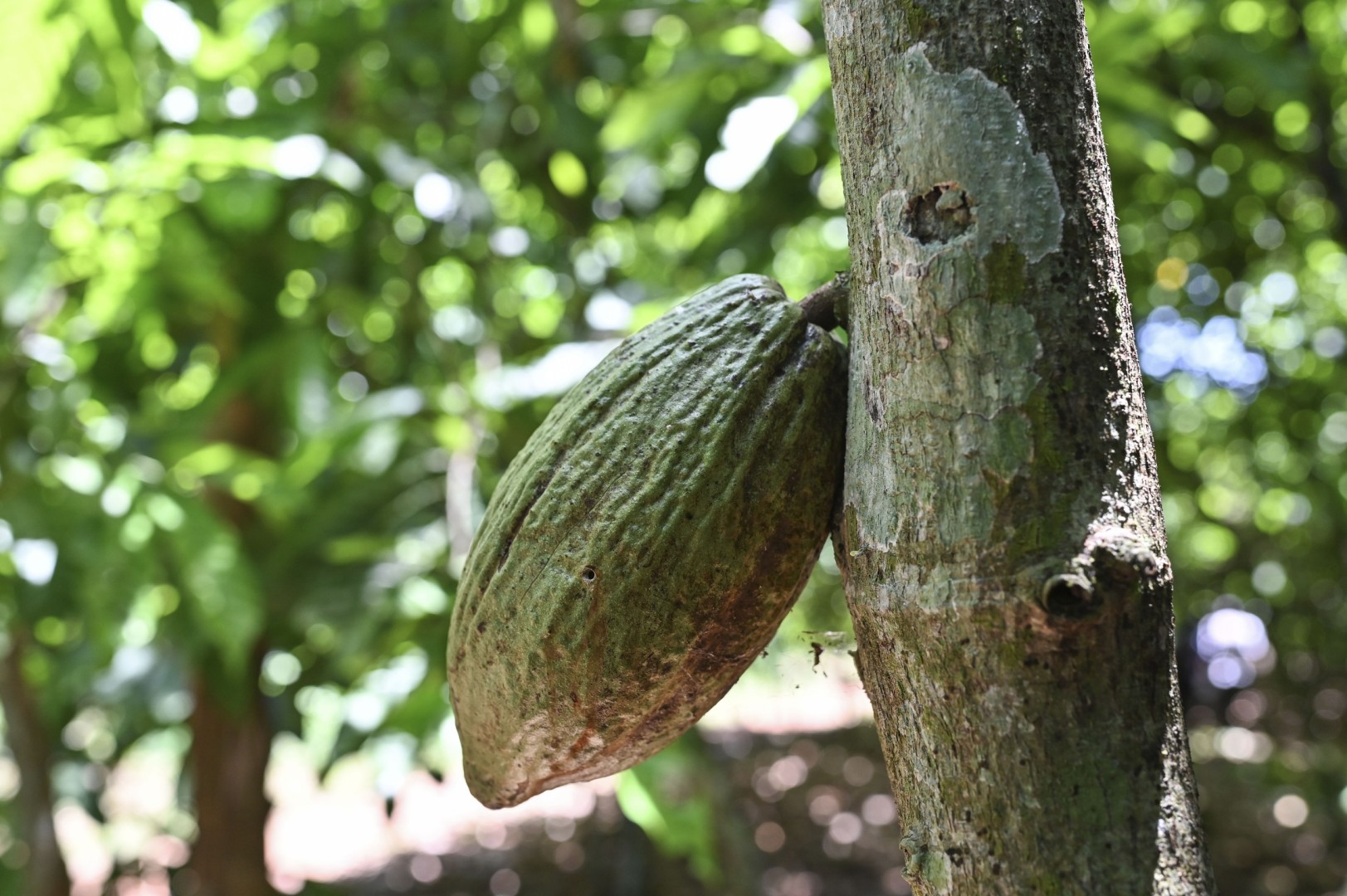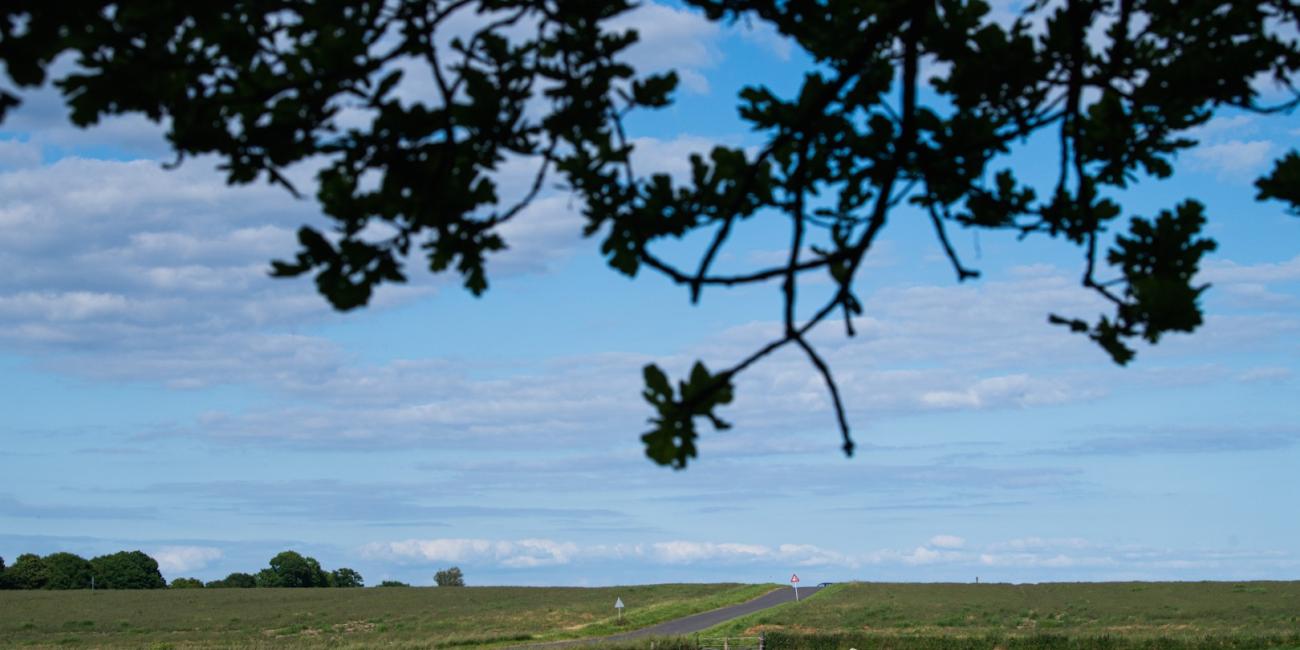
Article misleadingly dismisses climate stressors on African cocoa
- Published on March 24, 2025 at 17:44
- 3 min read
- By Manon JACOB, AFP USA
"Data show that cocoa production has increased during the last few decades of modest warming, rather than falling. Part of the reason for this is improved growing conditions in those regions and carbon dioxide fertilization," says H. Sterling Burnett (archived here) in a February 14, 2025 article for the site Climaterealism.com.
The editor at the Heartland Institute, a think tank that has previously spread climate misinformation, singles out yields from Ivory Coast, Ghana, Nigeria and Cameroon, four African nations that are responsible for about 70 percent of the cocoa in the global supply chain.
"There is no evidence whatsoever that climate change is putting cocoa production under extreme pressure," Burnett says in the article, which was republished by multiple websites.

The article spread as consumers faced high prices for chocolate ahead of Valentine's Day and Easter.
Ivory Coast is by far the world's top grower of cocoa, producing more than two million tons of cocoa beans in 2023, followed by Ghana at over 650,000 tons (archived here). But the two countries experienced poor harvests in 2024 as bad weather and disease hit crops, causing a supply shortage that sent global prices to all-time highs.
The Climaterealism.com article takes aim at an Earth.com story (archived here), which highlighted research from January that modeled the future impacts of climate change on cocoa production (archived here).
The paper, from Wageningen University's Paulina Asante (archived here) and her team in the Netherlands, used a computer model to simulate the impact of climate change-driven emissions scenarios on yields by the year 2060. It projected Nigeria and Cameroon may see an increase in their arable lands.
But the same research also found that these conditions may cause Ivory Coast to lose up to half of its current cocoa-growing areas, and that Ghana could see a moderate decline.
Asante told AFP that while it is accurate to say cocoa production has increased in certain regions over the past few decades, the reasons matter.
"This rise is primarily due to an expansion in the production area, often at the expense of forest, rather than improvements in yield," she said March 6.
Christian Bunn, scientist at the International Center for Tropical Agriculture (archived here), agreed that the increase has stemmed from expanding growing areas.
"There is no technical progress due to improved management, varieties or CO2 fertilization," he told AFP March 20.
It is also unclear if future increases in CO2 in the atmosphere will benefit mature cocoa trees.
Studies of young trees showed a limited positive effect on cocoa productivity from CO2, roughly counterbalancing the negative effects of elevated temperatures (archived here and here).
"However, those studies were limited in considering extreme events, which appear possible in such (high) emissions scenarios," Bunn said.
These extreme events could, in turn, destroy parts of a region's harvest, as they have in the past.
Climate volatility
The effects of climate change on cocoa production have also already been observed, according to field experts.
Cocoa trees, which are most productive for about 25 to 30 years, are struggling with unpredictable precipitation levels, which can lead to crop failures (archived here).
Multiple studies have reported on crop failures due to climate stressors in Ghana and Cameroon (archived here and here).
Years of low harvests due to volatile episodes of high rainfalls and extreme drought in certain regions of Ivory Coast and Ghana have contributed to the current fragile state of the sector (archived here).
"It will take years to fill stocks, all while consumers pay double for chocolate," Bunn said.
Ibe Osita, senior research scientist and agro-climatologist at the Cocoa Research Institute of Nigeria (archived here), also said climate-driven deviations from the preferred mean annual rainfall have "impacts on the yield of cocoa" (archived here).
The recent outbreaks of a virus transmitted by bugs in Ivory Coast and Ghana have also driven up cocoa prices in the region, he added March 19 (archived here).
Deforestation concerns
Current and future cocoa-growing regions may choose to expand their crops, further sacrificing forests to meet global demand.
This may accelerate the rate of forest losses, which have already been observed in the past 20 years in Africa, including in Ivory Coast and Ghana (archived here).
Trees on agricultural land play a crucial role in removing CO2 from the atmosphere (archived here, here, here and here) and preserving biodiversity (archived here).
Forests absorb CO2 and help fight climate change. They also provide habitats for endangered plants and animals, including primate populations (archived here).
AFP has previously debunked false and misleading claims about the effect of human-induced CO2 on crops.
Copyright © AFP 2017-2025. Any commercial use of this content requires a subscription. Click here to find out more.
Is there content that you would like AFP to fact-check? Get in touch.
Contact us




